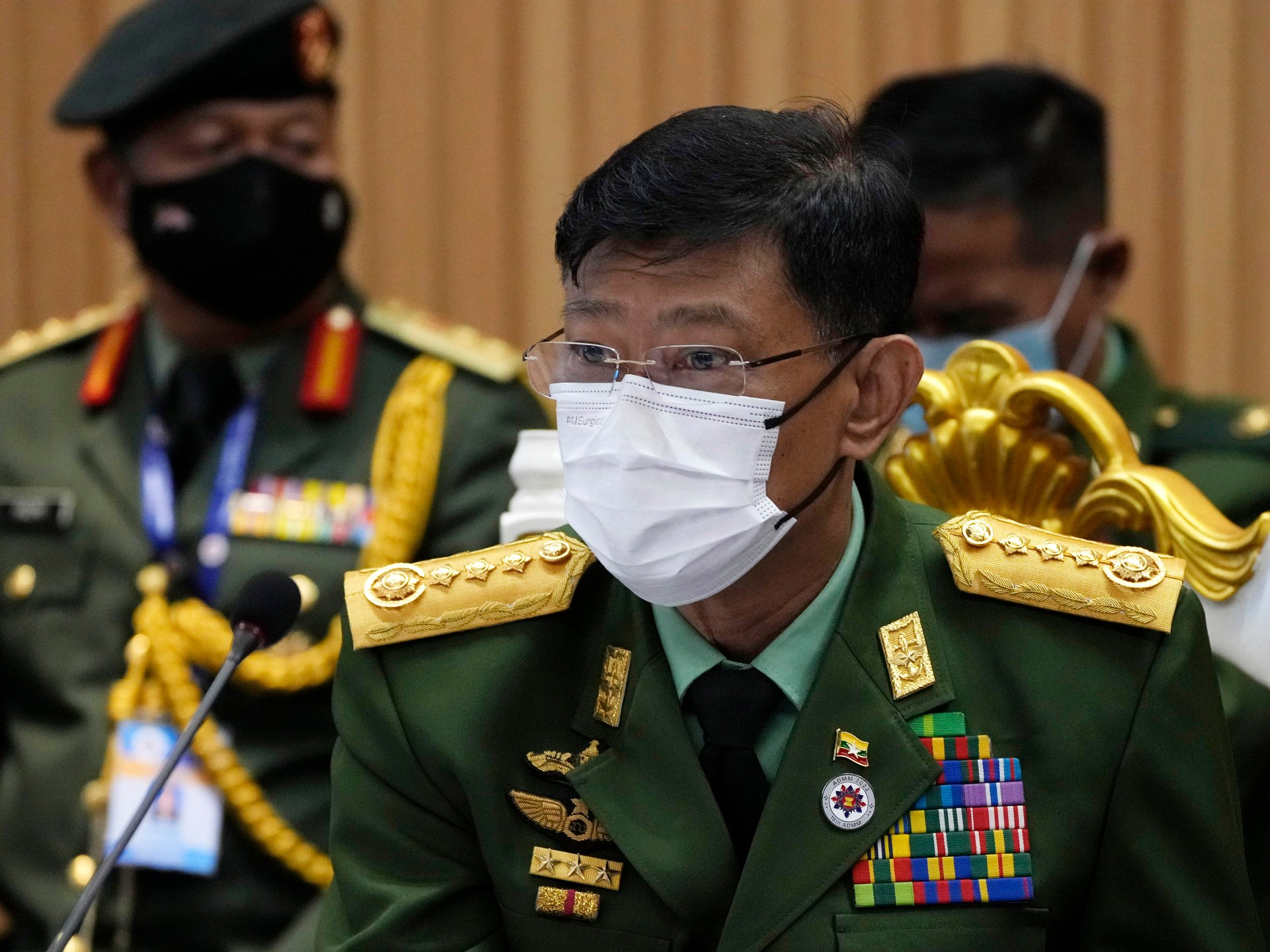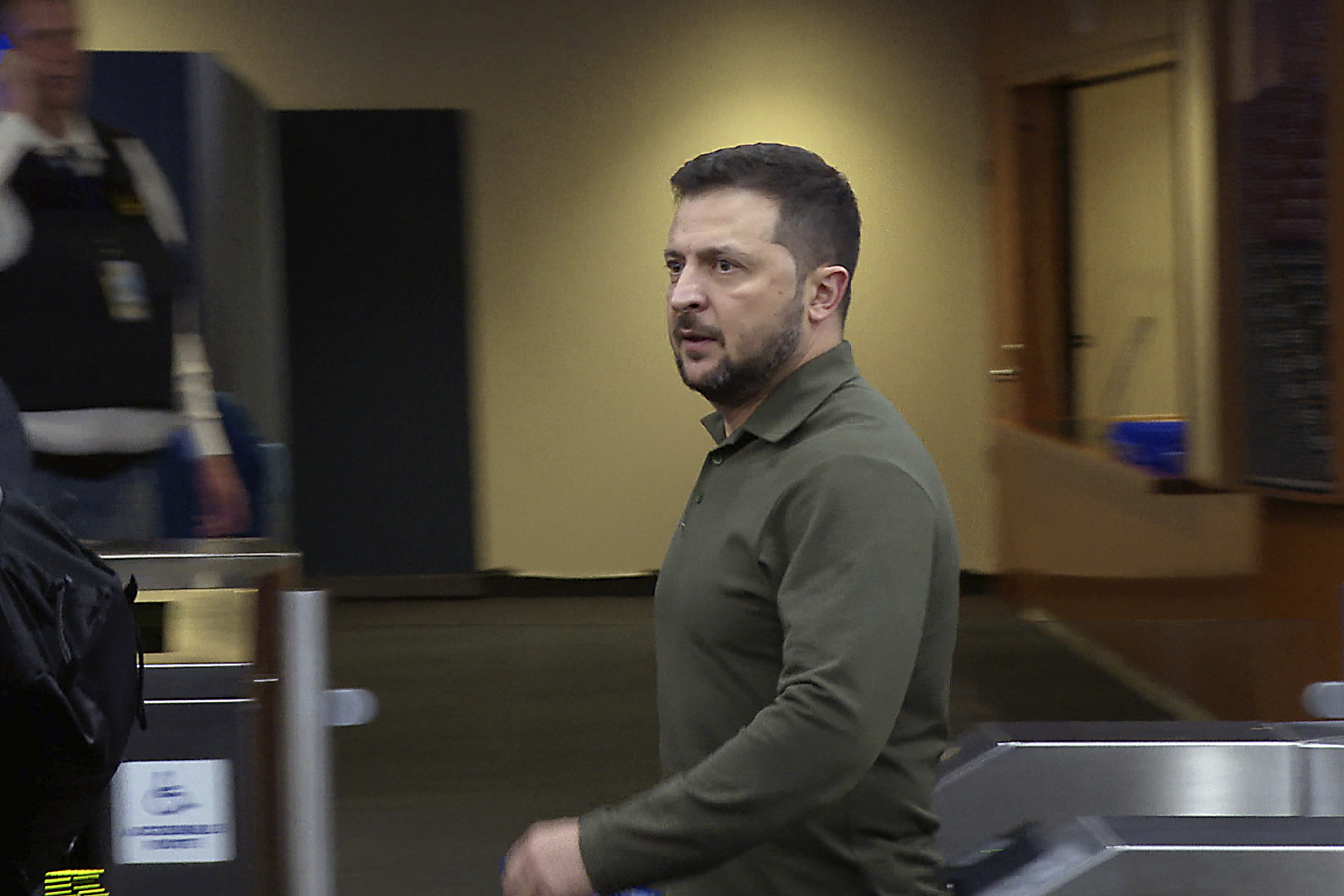In the neighbourhood of Diego Maradona
Villa Fiorito, Argentina – There are some stories about Diego Maradona that you cannot believe.
One that you can, starts in a small school with a sunny courtyard that has trees in bloom and involves an orange. Maradona attended primary school in the poor, working-class city of Villa Fiorito on the outskirts of Buenos Aires.
According to neighbourhood lore, he walked home from school, kicking and playing tricks with the orange he got for dessert from school as if it were a football, an object he was already learning to dominate.
“That’s the famous story,” Cristian Bustos, 44, a lifelong Fiorito resident, said outside the school’s gate.

Maradona’s football wizardry as a child astonished coaches.
He moved out of Villa Fiorito and the small white house he shared with his parents and five siblings when he was a teenager. He left for the Buenos Aires neighbourhood of La Paternal, where he played for the Argentina Juniors, before moving to the Boca Juniors in the same city and then catapulting onto the international stage.
But the spirit of the scrappy, controversial and beloved superstar continues to reverberate throughout Fiorito, even two years after his death at the age of 60 from heart failure and pulmonary edema. His image is etched on the community’s weathered skin.
Muralists have painted Maradona on the facades of houses and sports clubs. The images are outside a dirt field used by a local football club and on crumbling walls that locals walk by on their way to and from work.
“I think that all of us in the neighbourhood have some of Maradona in us,” said Bustos, who works in the Fiorito Cultural Centre. “Those of us who were born inside Fiorito, who struggle to make it, we understand what it’s like to fight against power.”
Fiorito has changed since Maradona worked over that orange on its streets. There is electricity, running water and modest beautification projects. A street corner where neighbours used to dump their rubbish is now a grass-covered plaza, and the dirt pitch where Maradona honed his skills is full of houses.
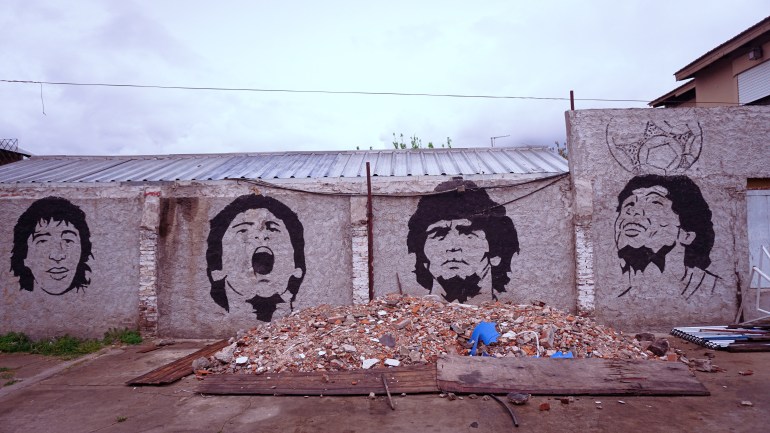
The school where he got his oranges has undergone a makeover, and a mural of a young Maradona graces its inner courtyard.
“It was always important that this was Maradona’s school,” said Laura Fleitas, 46, who has worked at the school since 1998.
“His grandmother and godmother both worked here. His grandmother was a cook. In the neighbourhood, they were very well-known.”
Claudio “Tati” Villarruel, 48, has also heard the stories passed on from his father who co-founded Estrellas Unidas, the Fiorito football club where Maradona first played as a youngster. It was then known as Estrellas Rojas.
In its early days, it was a tiny neighbourhood club that operated from the kitchen tables of residents and later formalised its operations with a clubhouse not far from where Maradona lived.
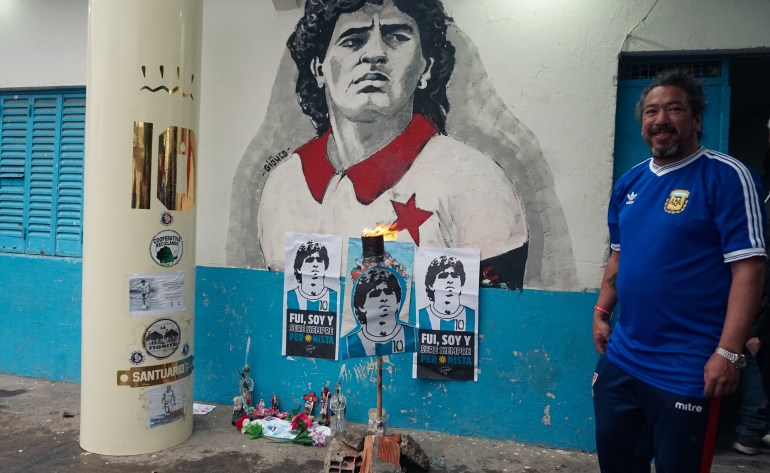
Recently, Villarruel’s uncle, Osvaldo, reminisced about how a five- or six-year-old Maradona would literally dance around him and the other older boys with a football, much to their chagrin. On some days, they sent him packing, laughed Villarruel, who grew up five blocks from Maradona’s original house and is now secretary general of Estrellas Unidas.
The club organised a barbecue and party on October 30 to mark Maradona’s birthday, drawing musicians, artists, relatives and former teammates to the clubhouse, which is decorated with images of Maradona.
Men of Maradona’s vintage embraced and reminisced about their own glory days on the field and how time flies. Then, they all poured onto the street to inaugurate a new street sign with Maradona’s name.
For many here, it was not just Maradona’s greatness on the field, but his defiance off it that they loved. He attacked US imperialism, the riches of The Vatican and bemoaned the growing impoverishment of Argentines.
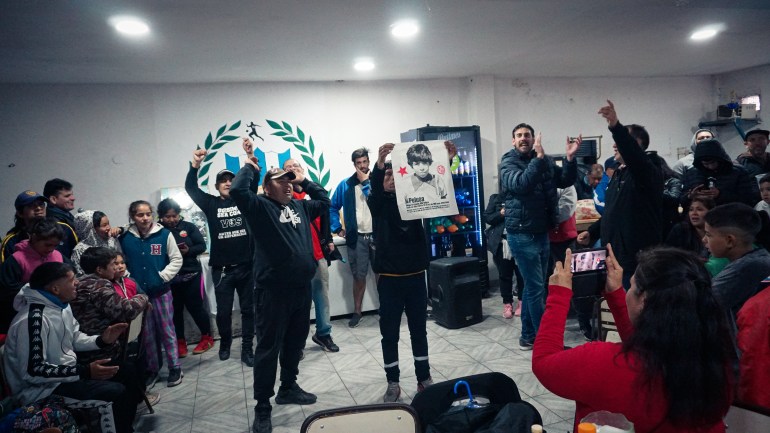
“I couldn’t imagine this World Cup without Diego because Diego gave it that quota of enthusiasm and pride,” Villarruel said.
“We still miss him because of all the things he might be saying. He never kept quiet. And despite everything he went through with addiction, that doesn’t change anything for us because he’s not the only one, and like he said: You can’t stain the ball.”
For all the things that have changed in Fiorito, many have stayed the same. The area where Maradona lived has a sewage system now, but an entire other section still does not. Fiorito continues to strain under crushing poverty.
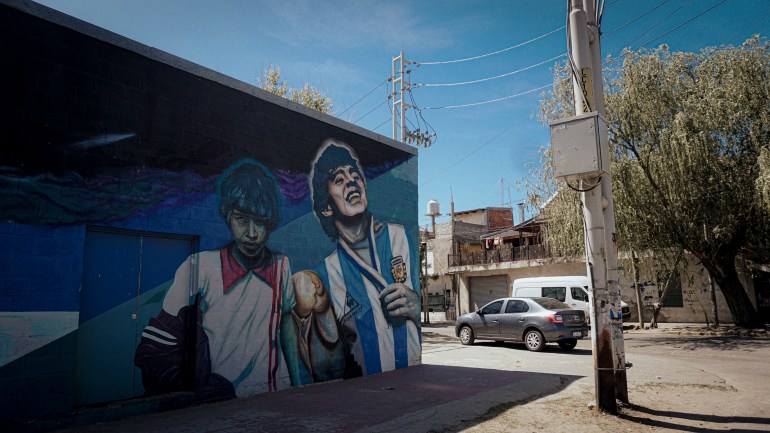
Maradona’s childhood house, which Argentina’s government named a site of historical significance last year, has become a sort of shrine to the star. Fans leave flags and flowers outside although the house is not open to the public and is in disrepair. Maradona’s mother is said to have given the property to a woman she knew, and that woman’s son lives there now.
Bustos laments that more has not been done to preserve the historical significance of the home and other connections that Fiorito has to Maradona, which he believes could be an economic driver for locals.
While residents revel in the pride that comes with living in Maradona’s original stomping grounds, he said they are also used to the photo ops that produce no real change.
“We know because we live it,” Bustos said. “They’ve already lied to us so many times. It speaks to why we fight against the powerful and things like that, which Diego did and which I think a lot of people adopted.”
Bustos’s own focus has been on generating more creative outlets for his community. He has been working with local muralists on projects that add colour to the streets.
During the COVID-19 pandemic, they created an “open sky gallery” of murals on homes that in some cases were dedicated to people who had succumbed to the disease. “Convirtiendo el dolor a colour,” he said in Spanish, which translates into “turning the pain into something that is colourful”.
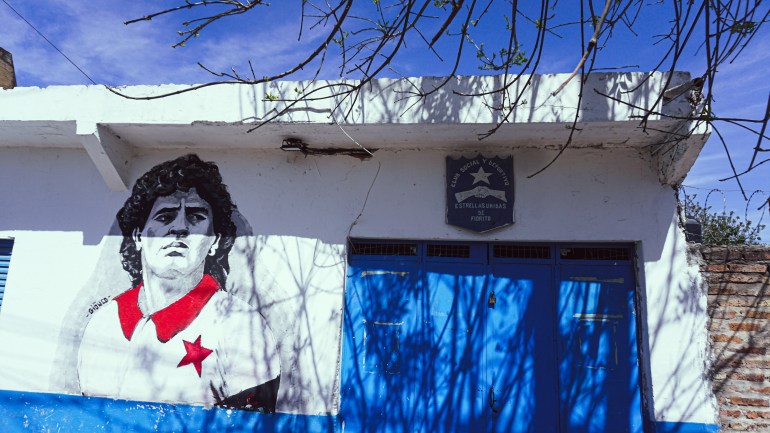
Although Maradona left Fiorito long ago, the kinship he forged with those who live here remains.
“I loved that he would fight with everyone,” Bustos said. “And that air of superiority – I think all of us from Fiorito have a touch of that too. Everyone wanted a piece of Maradona, not just Fiorito. You feel sorry for how it all ended. Many said that he lived the life he wanted, but I don’t think he was properly taken care of, either.”
Maradona is gone, but the people of Villa Fiorito continue to live with him. Gustavo Horacio Insaurralde, 39, works next to a towering rendition of Maradona sitting on a pitch that is painted on the back of a building in town.
He works five days a week as a cardboard collector, scouring the streets of Buenos Aires for recyclable material that he will then sell. He stores giant sacks with his daily haul in front of the Maradona mural. Each of those bags filled with cardboard represents “the bread I bring home for my family”, he said.

Insaurralde reflected on the joy that Maradona gave people. He had tried to pay his respects to him after his death, joining the masses that lined up for a viewing of his coffin in Argentina’s presidential palace, but skirmishes that broke out between fans and authorities meant that he never made it inside.
“Diego was a magician,” Insaurralde said. “Perhaps as a person he was not as we hoped. There are things that he did that we punish boys for, and you have to teach youngsters that they don’t work. But the reality is that with the ball, he made magic. He lifted the jersey up high.”

